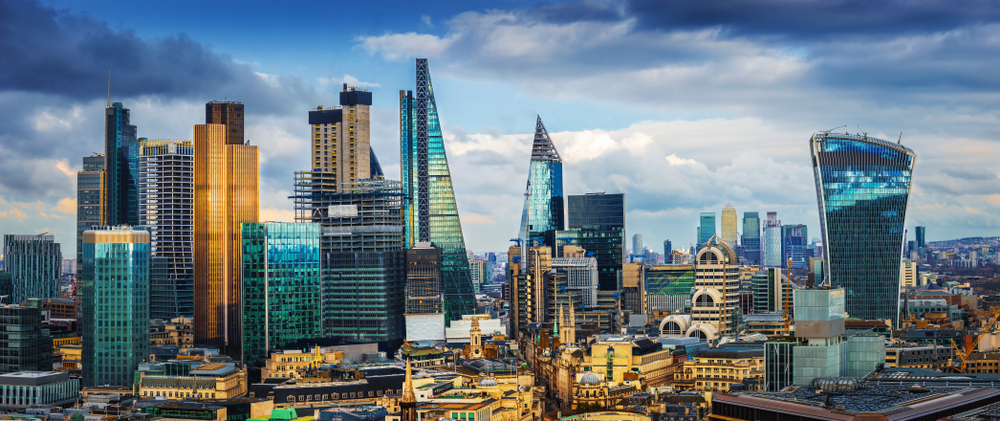
Spotlight on City of London
Home to the London Stock Exchange, the City of London is known for being a place of work. Yet with the growing trend of City workers wanting to live close to the office and with more late-night shops and bars adding to its appeal, it’s also becoming a sought-after place to live. If you’re looking for a premium residence with fantastic rental potential, now could be a wise time to invest in this most central borough. A limited supply of residential properties Over 370,000 people commute to the tiny borough known as the ‘Square Mile’, yet only 9,000 people currently live here. The borough’s population is forecast to rise by 14% over the next decade as more and more Londoners move nearer the office, to cut down on their travel time and add to their leisure time. Demand for City properties is compounded by an acute lack of supply. And according to CRBE Residential, this acute lack of supply won’t be easing anytime soon as there are only 814 new homes in the planning pipeline.[1] A high rental potential The borough has a high proportion of renters, with 43% of all residents living in the private rental sector. Despite rents in the Square Mile being some of the highest in the Capital, some young professionals find it makes financial sense to live here because walking to work means no commuting costs. The City’s rental properties also attract wealthy UK and overseas students, whose parents find the safety factor offered by a crop of modern new-build flats with concierge services particularly reassuring.[2] New “ring of steel” to provide enhanced security A £5m security cordon is due to be built to protect some of the Square Mile’s skyscrapers, workers and residents. Manned checkpoints, rising street bollards and crash-proof barricades are among measures proposed to bolster the City’s defences by controlling the flow of traffic into the heart of the financial district.[3] The new scheme is subject to a consultation which, if approved, would be fully implemented by 2022. The proposals come at a time when a swelling number of people want to live within the financial district’s ancient walls. And the City’s enclave-status is a major draw for many residents as the borough’s crime rates are low compared to the London average.[4] Stylish, new-build walk-to-work homes For those looking to make their home in the City or find a place to stay during the week, an influx of elegant new-builds is offering more variety. The largest recent development is The Heron, next to the Barbican, which opened three years ago providing 285 new homes in a 36-storey tower. Another prime example is Barratt London’s Landmark Place, a stylish new waterfront scheme next to the Tower of London, offering modern apartments with spectacular views. While it’s true that City planners prefer to focus their energies on more high-rise office buildings to compete with Canary Wharf, they have also started to encourage new homes – especially in fringe areas which fall outside the core banking zone. Many of these new builds have historic foundations, such as the redevelopment of a historic hospital complex at Barts Square, the creative refurbishment of a 19th-century building on a medieval lane alongside Smithfield Market, and the conversion of old solicitor offices in Holborn.[5] Greater choice of shops, restaurants and bars To keep pace with the rising residential demand, there’s been a steady growth in the borough’s retail, leisure and entertainment offering.[6] Residents are finding the City of London is becoming a better place to live with high-quality shops, restaurants and bars staying open later in the evening and at weekends. Cheapside is the City’s high street, with the exclusive Royal Exchange next to Bank station and One New Change at the opposite end next to St Paul’s Cathedral. In the heart of the City, there are eye-catching rooftop bars and restaurants, such as the Duck & Waffle which is open 24 hours on the 40th floor of the Heron Tower. At the borough’s eastern edges, the area between Old Street and Chiswell Street is full of interesting street-food stalls, and the warren of streets east of Bishopsgate is filled with independent shops and cafés.[7] Excellent transport links The Square Mile is the Capital’s best-connected borough. There are six mainline stations – Liverpool Street, Cannon Street, Fenchurch Street, Moorgate, City Thameslink and Blackfriars. Waterloo station is also within easy reach via the Waterloo & City line. All Underground lines, except for Piccadilly and Victoria, have stations in or near the City.[8] When Crossrail’s Elizabeth line trains start running in 2018, they will stop at Liverpool Street and nearby Farringdon, reducing Heathrow journeys to just 35 minutes.[9] Current asking prices and rental yields The current average value of properties in the City of London is £865,502. It has increased 4.00% in the last 12 months and 32.50% in the last five years. For a two-bedroom apartment, the average asking price is £1,224,117, and the average asking rent is £3,196pcm, which means the gross rental yield is currently 3.10%.[10] This content is correct as of April 2017
[10] http://www.zoopla.co.uk/market/city -of-london


